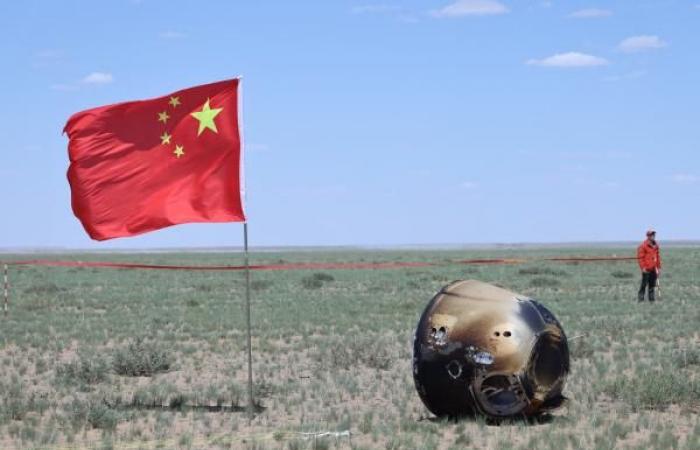The Chinese Chang’e 6 probe landed this Saturday in the northern Chinese region of Inner Mongolia with the First samples from the surface of the dark side of the Moonwhich could shed light on the past of our satellite and the solar system.
The return of Chang’e 6 marks a new success for the Chang’e program (named after a goddess who, according to Chinese mythology, lives on the Moon)which began with the launch of a first orbital probe in 2007 and which had already managed to land for the first time on the hidden side of the satellite in 2019 and bring back samples of its visible side in 2020. A valuable cargo
(Read: The political consequences that there would be with the legislative elections in France).
The probe, whose round trip has taken about 53 days, It brings with it about two kilos of rock samples from the hidden side of our satellite, the first collected by humans.
Scientists will be able to compare the rocks with samples previously collected on the visible side of the Moon.and compare their chemical composition to find clues as to why the two faces of the satellite are so different.“, he explained astrophysicist at the University of Hong Kong Quentin Parkerquoted by the Hong Kong newspaper South China Morning Post.
Chang’e Probe EFE
Earth’s gravity has affected lunar rotation over billions of years., slowing it down until the rotation and translation times were equal: the Moon takes approximately 27.3 days to both rotate on its axis and complete an orbit around our planet. As a result, it always shows the same face to the Earth.
(Read: British election campaign: Latin America and foreign policy off the agenda).
Unlike the visible face, The barely explored hidden side is marked by rugged terrain, with a greater number of craters, and is safe from terrestrial electromagnetic interference, providing an ideal environment for the placement of scientific instruments. A collection full of obstacles
The probe overcame significant challenges during sample collection, including high temperatures and communication limitations with the base on Earth, which caused Chang’e 6 to have only 14 hours to collect the samplesseven less than its predecessor Chang’e 5 had to collect rocks from the visible side of the Moon.
(You can read: IMF lowers US growth expectation to 2.6% for this year).
During the sampling and storage process, Chinese researchers in ground laboratories simulated the geographic model of the sampling area based on data sent back by the probe, providing support for the “clue“for the mission.
Chang’e Probe EFE
Samples from a key place
Chang’e 6 retrieved samples from its landing site, Aitken-South Pole Basinone of the largest and oldest impact structures in the solar system, with a diameter of approximately 2,500 kilometers and another 13 kilometers deep.
(Read: Is Biden’s candidacy falling through? The other names the Democrats have in their portfolio).
The age and magnitude of this basin They make it a true archive of lunar history. and, by extension, the solar system.
The region is also rich in deposits of minerals and volatile elements that can provide information about the Moon’s volcanic activity, and could have water ice on the surface of some craters that are permanently in shadow.
Moon iStock
Findings, in Chinese or English?
When the The previous lunar mission, Chang’e 5, recovered the first samples in decades from the visible side of the Moon.The first research on the rocks was carried out by a joint team of Chinese and Western scientists and published in the journal Science in 2021.
(Read more: Two out of three Israelis favor Netanyahu leaving politics).
There is now a lot of anticipation about how the research findings on the Chang’e 6 samples will be disseminated: although Chinese researchers acknowledge the importance or necessity of writing in their native language, it is difficult on a practical level, as getting papers published in prestigious English-language journals often brings rewards for scientists.
Voices like the astronomer Deng Licai They have argued that the results of research from national missions such as the Chang’e program “should be published primarily in Chinese journals,” as prominent Chinese scientists such as the Nobel Prize winner Tu Youyouwho published his article on the discovery of artemisinin in the Chinese Science Bulletin in 1977.
Moon iStock
Lunar exploration continues
China, the only country to have landed on the far side of the moon, will devote the next two Chang’e missions to exploring the moon’s south pole, where it plans to build a scientific exploration base together with Russia.
The Chang’e 7 mission is scheduled to reach the lunar south pole in 2026, where it will search for water ice deposits, while Chang’e 8 will explore possible uses of the resources discovered by its predecessor in 2028 and lay the foundation for a manned exploration, which the Chinese space program hopes to materialize around 2030.
EFE


